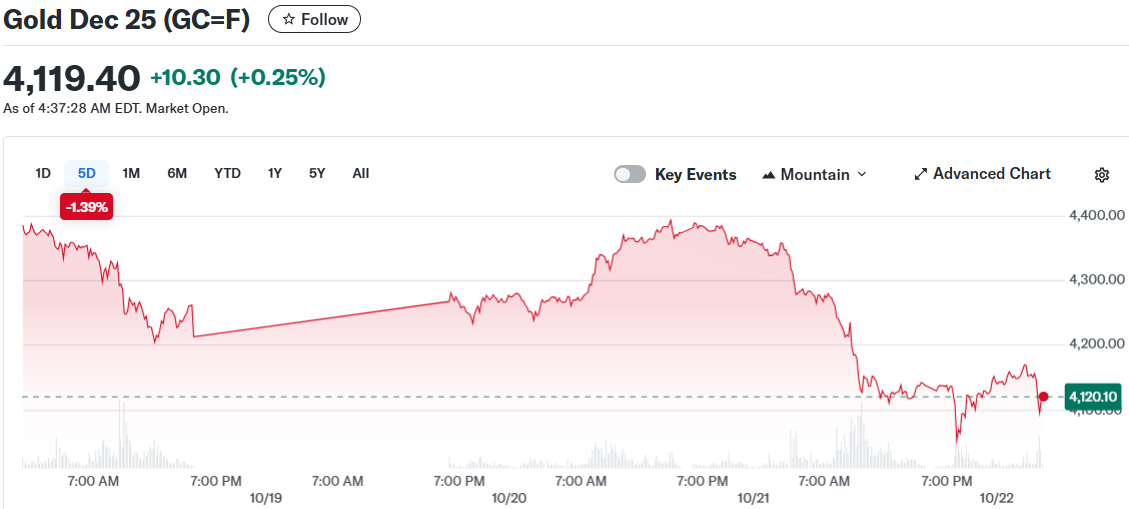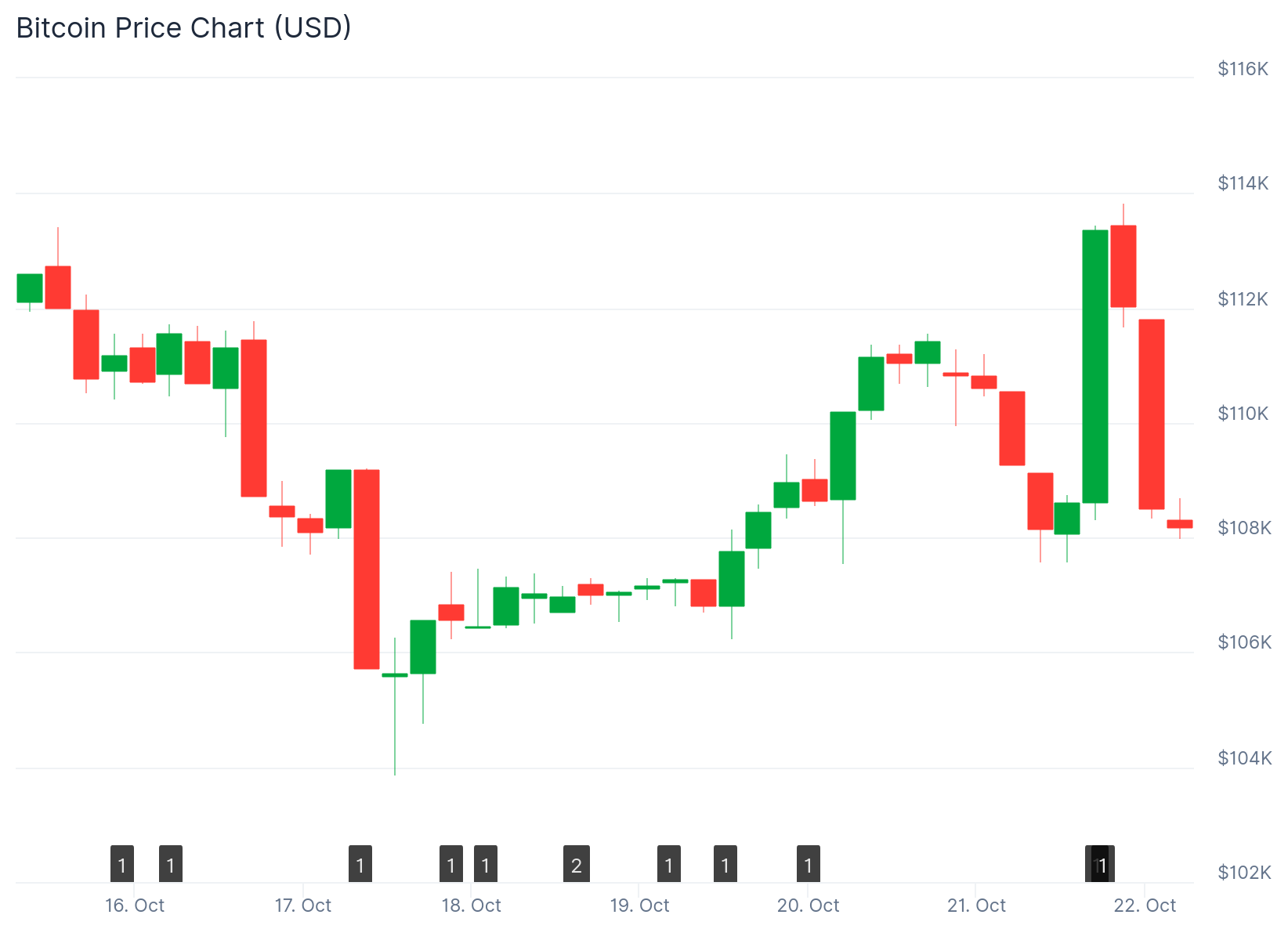TLDR
- Gold crashed over 6% on October 21 in its steepest one-day decline since April 2013
- The precious metal fell from a record high of $4,381 per ounce on Monday to around $4,082 per ounce
- Bitcoin rose 0.51% to $108,491 during gold’s selloff, trading in the opposite direction
- Gold lost approximately $2.1 trillion in market value in a single trading session
- US-China trade talk optimism and profit-taking after overheated gains triggered the selloff
Gold experienced its worst trading day in over a decade on Tuesday. The precious metal plummeted more than 6% after hitting an all-time high just 24 hours earlier. On Monday, gold reached a record $4,381 per ounce before crashing to $4,082.03 on Tuesday.

The decline marked the sharpest percentage drop since April 2013. US gold futures settled down 5.7% at $4,087.70. The selloff wiped out roughly $2.1 trillion in market capitalization in just one day.
Gold wasn’t alone in the precious metals downturn. Silver fell 7% while platinum dropped 5% during the same session. All three metals had been experiencing strong buying pressure in recent weeks.
The yellow metal had surged 25% over the previous two months. Rising US government debt, political uncertainty, and Federal Reserve rate cut speculation drove the rally. In 2025 alone, gold has gained more than 50%.
Bitcoin Gains During Gold Crash
Bitcoin moved higher as gold prices collapsed. The cryptocurrency gained 0.51% over the 24-hour period. Bitcoin was trading at $108,491 while gold struggled.

Analysts suggest this represents a capital rotation from gold into Bitcoin. Trader Peter Brandt noted gold’s market cap loss equaled 55% of the entire cryptocurrency market’s value. He calculated the precious metal lost $2.1 trillion in a single day.
Analyst Ash Crypto said the rotation from gold to Bitcoin has started. Market research firm Swissblock identified similar patterns in April. During that period, gold fell 5% over three days before Bitcoin rallied from its low point.
Binance founder CZ previously predicted Bitcoin would eventually surpass gold in market value. The current price action has renewed discussion about that possibility.
Trade Optimism Triggers Selloff
Multiple factors contributed to gold’s sharp decline. Growing optimism about US-China trade relations played a key role. Trade representatives from both nations are scheduled to meet this week.
President Donald Trump said he expects to work out a fair deal with Chinese President Xi Jinping. The two leaders plan to meet next week. This diplomatic progress reduced demand for safe-haven assets like gold.
The US dollar rebounded, prompting investors to lock in profits. Analysts said weeks of heavy buying had pushed gold to unsustainable levels. Many investors rushed to purchase physical gold during the recent rally.
India’s Diwali festival ended, reducing physical demand from the world’s second-largest gold consumer. The timing coincided with the price drop. Analysts cited this as another factor in the selloff.
On Wednesday, gold recovered modestly. The metal traded at $4,141.48 per troy ounce, up less than 0.4%. Bitcoin maintained its position at $108,491. The diverging price movements between gold and Bitcoin continue to attract attention from traders and analysts.



